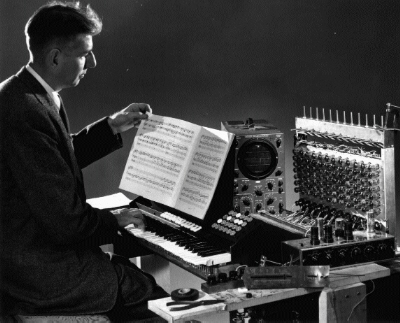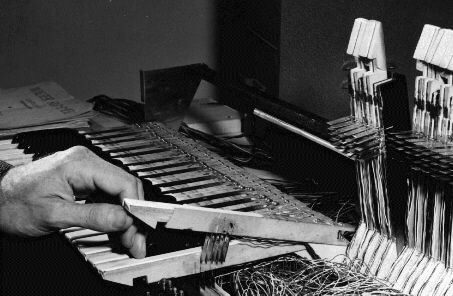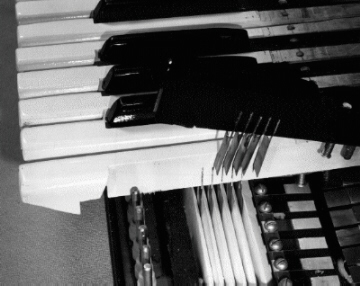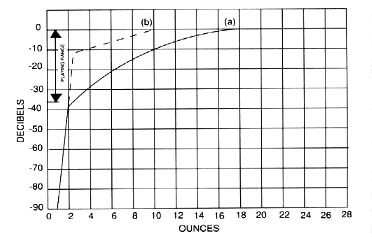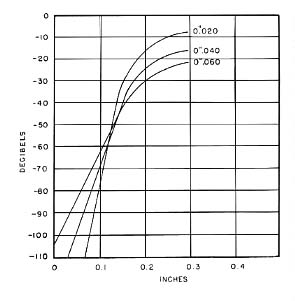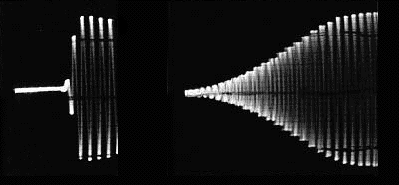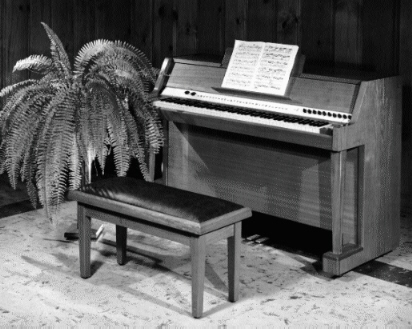 |
|
Touch Sensitive Organ (1952-1957) Le Caine began work on this instrument between 1952 and 1954 at his home studio. He brought the prototype organ to the National Research Council lab in 1954 and considerable development took place over the next year.
The Touch Sensitive Organ was modelled after the traditional pipe organ in its timbre and its concept. The timbres were all pre-set and operated by stops as in a traditional organ. Organ keys, unlike piano keys, are operated as switches which turn the notes on and off, but provide no control of volume. In the Touch Sensitive Organ, Le Caine extended the touch-sensitive volume control of the Sackbut to the polyphonic keyboard. Independent volume control for each key considerably expanded the musical ability of the electronic organ.
In addition to the
touch-sensitive keyboard, Le Caine also devised a technique to avoid
the "click" sound that had previously been part of the
attack of the notes of all electronic organs.
Below:
The 1954 Prototype
Under each touch-sensitive key were five electrodes, each of which was wired to a sound generator. The result was a great deal of wiring.
The keys of the Touch Sensitive Organ were spring-mounted to provide resistance to the performer. As the key was pressed lower, the electrodes attached to the bottom of each key came into closer proximity with the fixed electrodes below the keyboard, thus increasing the current transferred and the volume of the sound. By varying finger pressure, Le Caine could control both the volume of a note and its attack, gradual or percussive. He used the touch sensitivity to highlight a melodic line, to accent a ryhthmic structure and to provide independance to the many parts of a contrapuntal piece.
The Touch Sensitive Organ had 99 generators, one for each note of the keyboard. All of them could sound simultaneously. Le Caine played the instrument with a sustaining pedal and a device that could shift the pitch to provide vibrato and wide glissando.
The last model of the Touch Sensitive Organ, built in 1956, was designed to take advantage of techniques already learned by pianists. The name "Touch Sensitive Organ" was replaced by "Touch Sensitive Keyboard." In 1956 the Baldwin Organ Company bought the rights to the touch-sensitive keyboard. This was the result of Le Caine's demonstration of the keyboard at the 1955 Trade Fair. In 1956 the NRC development of the instrument ceased.
|
Photographs courtesy of the Music Division of the National Library of Canada.
Website questions to: info@b2bweb.ca

